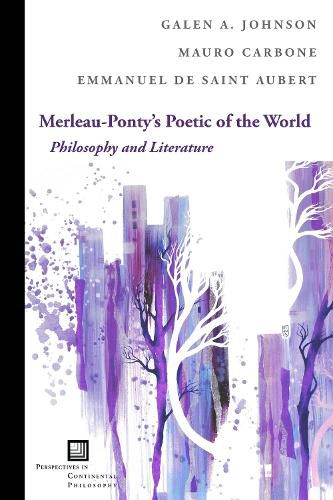Readings Newsletter
Become a Readings Member to make your shopping experience even easier.
Sign in or sign up for free!
You’re not far away from qualifying for FREE standard shipping within Australia
You’ve qualified for FREE standard shipping within Australia
The cart is loading…






Merleau-Ponty has long been known as one of the most important philosophers of aesthetics, yet most discussions of his aesthetics focus on visual art. This book corrects that balance by turning to Merleau-Ponty’s extensive engagement with literature.
From Proust, Merleau-Ponty developed his conception of sensible ideas, from Claudel, his conjoining of birth and knowledge as co-naissance, from Valery came implex or the animal of words and the chiasma of two destinies. Literature also provokes the questions of expression, metaphor, and truth and the meaning of a Merleau-Pontian poetics.
The poetic of Merleau-Ponty is, the book argues, a poetic of the flesh, a poetic of mystery, and a poetic of the visible in its relation to the invisible. Ultimately, theoretical figures or figuratives that appear at the threshold between philosophy and literature enable the possibility of a new ontology. What is at stake is the very meaning of philosophy itself and its mode of expression.
$9.00 standard shipping within Australia
FREE standard shipping within Australia for orders over $100.00
Express & International shipping calculated at checkout
Merleau-Ponty has long been known as one of the most important philosophers of aesthetics, yet most discussions of his aesthetics focus on visual art. This book corrects that balance by turning to Merleau-Ponty’s extensive engagement with literature.
From Proust, Merleau-Ponty developed his conception of sensible ideas, from Claudel, his conjoining of birth and knowledge as co-naissance, from Valery came implex or the animal of words and the chiasma of two destinies. Literature also provokes the questions of expression, metaphor, and truth and the meaning of a Merleau-Pontian poetics.
The poetic of Merleau-Ponty is, the book argues, a poetic of the flesh, a poetic of mystery, and a poetic of the visible in its relation to the invisible. Ultimately, theoretical figures or figuratives that appear at the threshold between philosophy and literature enable the possibility of a new ontology. What is at stake is the very meaning of philosophy itself and its mode of expression.